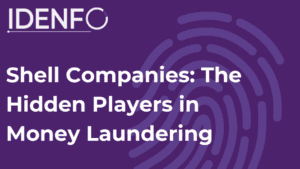Introduction: In Compliance, Speed Saves
For financial institutions, anti-money laundering (AML) compliance is no longer just a regulatory requirement — it's a business necessity. With financial crime tactics becoming more complex, regulators more demanding, and data flowing in real time, institutions need fast, automated solutions to stay ahead of the risk curve.
That’s where instant AML alerts and screening come in.
Whether it’s onboarding a new client or monitoring ongoing transactions, real-time AML systems ensure financial institutions detect red flags immediately, before they turn into costly penalties or reputational damage.
In this article, we explore how real-time AML alerts and automated screening transform compliance operations for banks, fintechs, insurers, and beyond.
What Are AML Alerts and Screening?
AML screening is the process of checking customer data against global databases of:
- Sanctioned individuals and entities
- Politically Exposed Persons (PEPs)
- Watchlists (OFAC, EU, UN, etc.)
- Adverse media and criminal records
AML alerts are triggered when a match is found flagging the customer or transaction for further review.
Real-time AML alerts ensure this process happens instantly during onboarding, login, or transaction initiation so compliance teams can act fast.
Why Instant AML Screening Matters in 2025
1. Real-Time Risk = Real-Time Action
A manual or batch screening process is too slow for today’s world. Transactions happen in seconds so should risk detection. Instant AML screening:
- Flag suspicious activity before it completes
- Prevents onboarding high-risk customers
- Triggers dynamic due diligence for faster decisions
2. Regulatory Expectations Are Higher Than Ever
Global regulators now expect:
- Continuous monitoring (not just periodic reviews)
- Immediate alerting on matches and red flags
- Detailed audit trails and documentation
- Risk-based decisioning frameworks
Non-compliance can result in multi-million-dollar fines, restricted licenses, and brand damage.
3. Fraud Prevention + Trust
Instant AML alerts don’t just protect institutions — they protect customers. When users know their financial provider is compliant and secure, trust increases, and churn decreases.
How Instant AML Alerts Work
Modern AML platforms use APIs, AI, and dynamic databases to scan and score risks in real time:
| Step | Description |
| 1. Data Input | User is onboarded or initiates a transaction |
| 2. Screening Engine | System checks data against watchlists and risk databases |
| 3. AI Matching | Uses fuzzy logic to detect name variations, aliases, and typos |
| 4. Risk Scoring | Assigns risk levels based on match quality, jurisdiction, and customer profile |
| 5. Alert Triggered | If risk is above the threshold, the alert is sent to the compliance dashboard |
| 6. Case Management | Analysts review, document, escalate, or dismiss the case |
This all happens in seconds, not hours or days.
Key Features of a Robust AML Alert System
Real-Time Screening Across All Channels
Onboarding, transactions, logins, KYC refreshes — all covered.
Dynamic Watchlist Updates
Live sync with global sanctions and PEP databases.
Fuzzy Name Matching & Linguistic Variants
Detects typos, nicknames, or international spellings.
Automated Escalation Workflows
Streamlines compliance processes with rule-based logic.
Audit Trails and Reporting
Every match and decision is documented for regulator readiness.
Use Case: A Fintech’s Compliance Transformation
A UAE-based fintech handling cross-border payments faced delays due to manual AML reviews. After implementing instant AML screening:
- Onboarding time dropped by 50%
- Alert resolution rate improved by 3x
- False positives decreased by 60%
- The company passed its annual compliance audit with zero findings
Real-time alerts helped them grow faster without compromising on compliance.
Best Practices for Financial Institutions
- Integrate AML Screening into Onboarding
Screen users at the first point of contact to block risk early. - Don’t Rely on Static Lists
Use platforms that pull from constantly updated global databases. - Implement Risk-Based Thresholds
Not all matches require escalation — set risk levels to focus analyst time. - Automate Alerts with Human Oversight
Let the system do the heavy lifting, but always keep compliance officers in the loop. - Train Staff Regularly
Keep teams updated on new risks, sanctions, and process changes.
Conclusion: Real-Time Compliance for a Real-Time World
With regulatory scrutiny rising and financial crime evolving fast, instant AML alerts and screening are no longer a luxury, they’re a necessity.
Whether you're a digital bank, payments provider, or traditional financial institution, adopting real-time compliance tools ensures you stay ahead of risk, impress your regulators, and protect your reputation.
Frequently Asked Questions (FAQ)
How is instant AML screening different from batch screening?
Batch screening happens at scheduled intervals. Instant screening checks user or transaction data in real time, enabling immediate decision-making
Do real-time alerts create more false positives?
Not necessarily. AI-powered matching reduces noise by contextualizing alerts and prioritizing relevance.
Is instant AML screening mandatory?
While not mandated in every jurisdiction, it’s increasingly expected as part of a robust, risk-based AML program.









